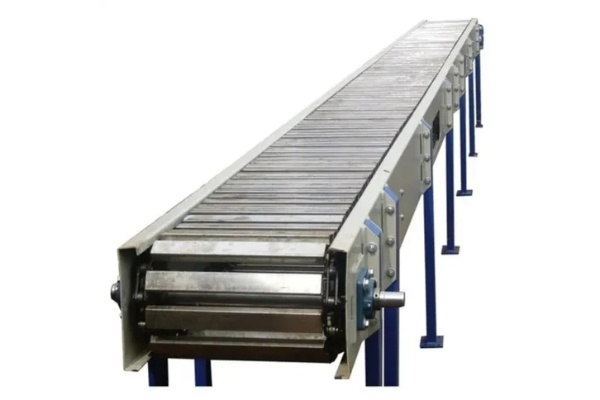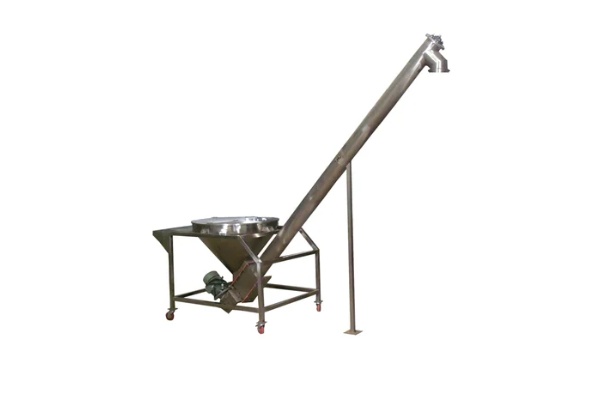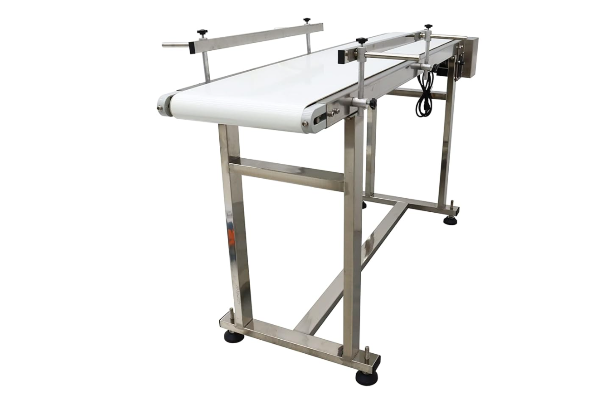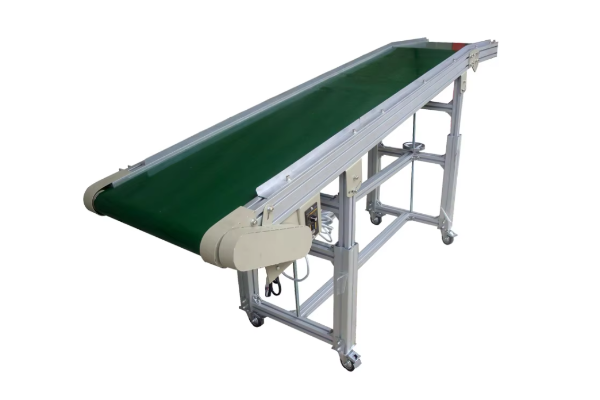
Small Belt Conveyor
Small Belt Conveyor can cost anywhere from $100 to $4,500, depending on length, width, belt material,and frame material.
Width or diameter: 300mm/customized
Voltage: 110v, 220v, 380v, 460v
Power supply: 0.4/0.75/1.5/2.2KW
Material: carbon steel/aluminum alloy/stainless steel
Belt material: PVC/PU/rubber/plastic/stainless steel
Conveyor type: linear conveyor belt
What is Small Belt Conveyor?
Small Belt Conveyor is a common material handling equipment in current production operations. This type of equipment is mainly used to achieve continuous movement of various types of light, small or medium-sized materials. Small Belt Conveyor is usually straight in structure, but it also includes turning or inclined types that can adapt to spatial layout. Conveyor belts are made of various materials, such as PVC or PU, to adapt to the characteristics of different materials. These conveyors are usually compact in size, easy to arrange and integrate in the existing production environment, and are a common tool for material flow.
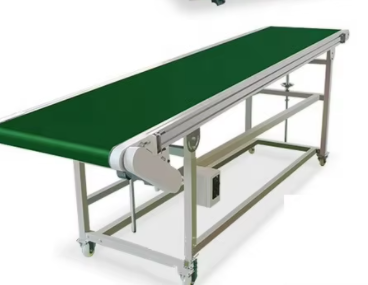
Choosing a suitable Small Belt Conveyor requires comprehensive consideration of many factors, among which the type is the key to determining its applicability. According to different working conditions and material characteristics, Small Belt Conveyors can be divided into several main types, each with its own unique advantages. The first is the fixed belt conveyor, which is suitable for point-to-point, long-term, and stable transportation of materials on the production line. Once installed, it is not often moved. The second is the mobile belt conveyor, which is equipped with wheels at the bottom to facilitate flexible movement between different work locations, especially suitable for scenes that need to change positions frequently. Finally, there is the inclined (climbing) belt conveyor, which is designed for materials that need to be transported upward or downward. In order to prevent materials from sliding down when tilted, conveyor belts with patterns, sidewalls or partitions are usually selected to ensure stable transmission of materials on a sloped path.
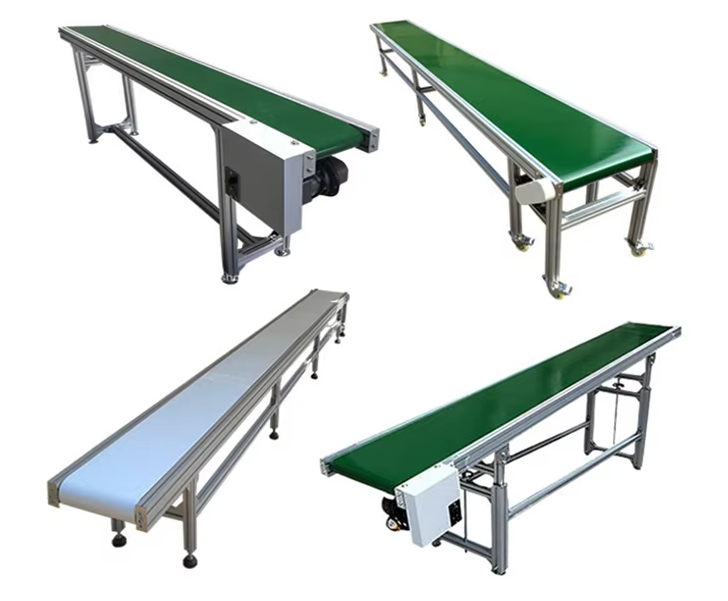
What are the types of Small Belt Conveyor?
The types of Small Belt Conveyor are usually divided according to their structural form, conveying function, drive mode and application characteristics. Although they all have the characteristics of "small", the detailed design will be optimized according to the specific usage scenario.
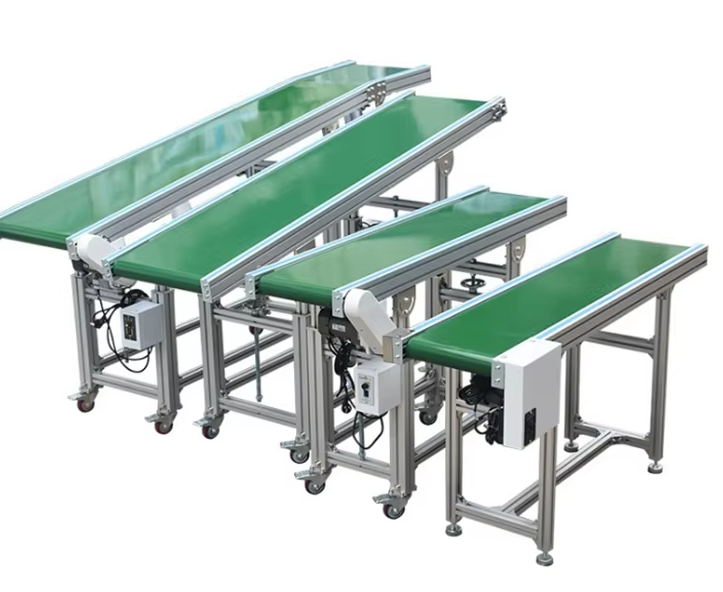
Climbing Small Belt Conveyor (inclined) Features: The conveyor body is inclined at an angle, which is used to transport materials from low to high or from high to low. To prevent materials from sliding down, the surface of the conveyor belt is often designed with anti-slip strips, skirts or baffles.
Application: Suitable for occasions where height difference transportation is required, such as lifting materials from the ground to the entrance of the packaging machine, or conveying from one floor to another.
Features of PVC belt conveyor: The conveyor belt is based on polyvinyl chloride (PVC) and has a smooth or patterned surface.
Application: The most common and widely used, suitable for the transportation of general industrial products, packaging, electronic products, etc.
Features of rubber belt conveyor: The conveyor belt is based on rubber and has better wear resistance, high temperature resistance, and impact resistance. It is usually used to carry heavier and more abrasive materials.
Application: Relatively less in small equipment, it may be used for small minerals, building materials, or occasions with high wear resistance requirements.
Basic parameters of Small Belt Conveyor
| Model | Length | hight | Power |
| B500 | 3-10m | 1-4m | 0.75-1.1KW |
| B600 | 3-10m | 1-4m | 0.75-1.1KW |
| B800 | 4-10m | 1.5-4m | 1.1-2.2KW |
What are the advantages of Small Belt Conveyor?
Small Belt Conveyor has significant advantages in many specific application scenarios due to its compact size and flexible structure. Here is an introduction to its main advantages:
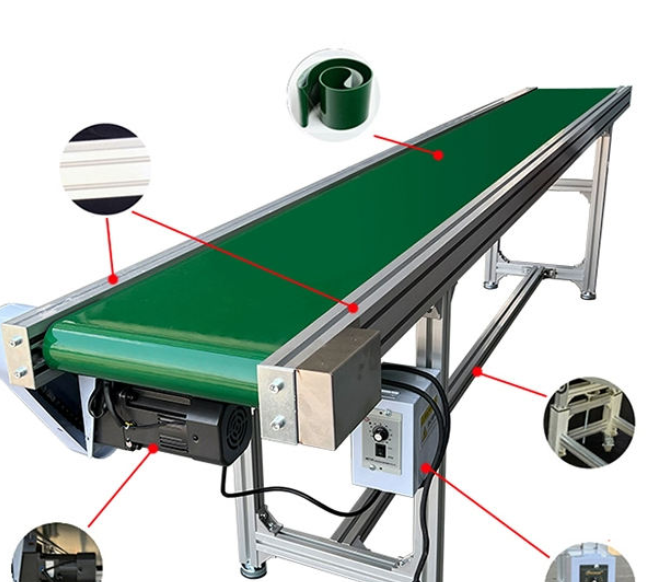
Compact structure and space utilization: Small Belt Conveyor has a small footprint and a lightweight design, which can effectively save space in the production workshop or warehouse, and can be easily integrated into existing production lines or between workbenches to achieve seamless flow of materials. Its lightweight design also facilitates the handling and rearrangement of equipment.
Conveying performance and material adaptability: This conveyor runs smoothly, has low noise, and does little damage to materials. It is particularly suitable for conveying fragile or surface-sensitive items. By selecting conveyor belts with different materials and surface treatments, it can also widely adapt to materials of various shapes, sizes and states, and supports multiple conveying directions such as horizontal, inclined or turning.
Safety and reliability: Belt conveyors have fewer exposed moving parts and are often equipped with safety shields, which reduces operating risks. At the same time, its simple structure also means that the failure rate is relatively low, and it can operate stably for a long time, reducing production downtime.
What are the systems of Small Belt Conveyor?
Small belt conveyor systems are common material handling solutions in industrial production. They consist of key components such as hydraulic systems, mobile systems, and inclined conveyor mechanisms. These components work together to provide flexible and adaptable material handling capabilities, enabling them to meet diverse requirements in diverse working conditions and achieve continuous material transport.
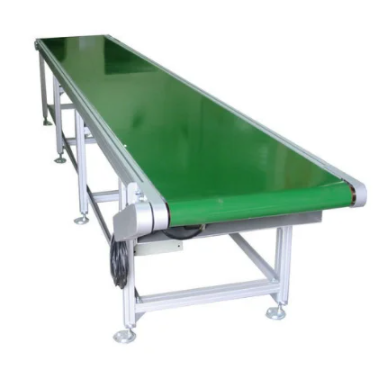
Hydraulic system (lifting function)
In the Small Belt Conveyor, the hydraulic system is usually not used to drive the conveyor belt itself, but is mainly used for the lifting function of the mobile conveyor.
Features: The hydraulic system provides smooth and precise lifting control and can carry relatively large vertical loads. Hydraulic lifting is a practical configuration for mobile conveyors that need to adjust the height frequently.
Mobile system
The mobile system gives the Small Belt Conveyor the ability to move flexibly between different work locations, greatly expanding its application range. Wheeled movement is the most common form of small mobile belt conveyors. Crawler movement, this form is relatively rare in small conveyors, but for conveyors that need to move on rugged or soft ground (such as construction sites, farmland), the crawler system provides better off-road capabilities and stability.
Inclined conveying (climbing function)
Inclined conveying means that the Small Belt Conveyor can convey materials upward or downward at a certain angle. The key to achieving inclined conveying lies in the design of the conveyor belt and the frame. The frame structure of the inclined conveyor is usually designed to be adjustable (such as by bolt adjustment or hydraulic lifting), or fixed to a specific inclined angle. In order to prevent materials from sliding down when tilted, inclined conveyors usually use conveyor belts with special surface structures, such as patterned conveyor belts, sidewall conveyor belts, and partition conveyor belts.
Small Belt Conveyor Structure
Small Belt Conveyor models vary, but all Small Belt Conveyors are built around several core components that work together to achieve continuous and smooth material transportation. A typical Small Belt Conveyor is mainly composed of the following parts:
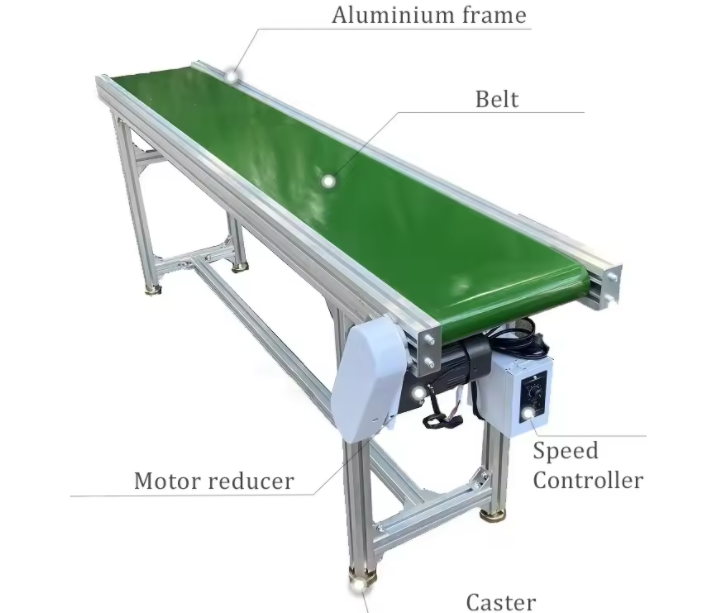
Frame
The frame is the skeleton of the conveyor, carrying and supporting all other components. Its stability and strength are the basis for the normal operation of the conveyor. Common frame materials include carbon steel, stainless steel and aluminum profiles. The frame can be a welded integral type with a solid structure suitable for fixed installation; it can also be a modular assembly type, which is easy to transport, install and adjust the length or layout according to needs.
Conveyor belt
The conveyor belt is the component that directly carries and transports materials and is the most important working part of the conveyor. Common conveyor belt materials include PVC (polyvinyl chloride), PU (polyurethane) and rubber. Smooth belt, the most common, is suitable for horizontal or small angle transportation. Patterned belt, with various patterns on the surface (such as herringbone, grass type, herringbone type, etc.), increases friction and is suitable for climbing transportation to prevent materials from sliding down. Sidewall belts, vertical sidewalls are installed on both sides of the conveyor belt to prevent material from spilling, and are particularly suitable for conveying powdered or bulk materials.
Drive device
The drive device provides power to the conveyor belt, enabling it to move continuously. Usually an AC motor is used, and its power is selected based on factors such as the weight of the conveyed material, the conveying length, the conveying speed and the inclination angle. The driving force is usually transmitted to the drive roller by chain, belt or direct connection (motor and reducer integrated). The drive device can be installed at the head, tail or middle of the conveyor. Head drive is a common configuration to provide sufficient traction.
What are the applications of Small Belt Conveyor?
Small Belt Conveyor is used in a variety of material handling and process connection scenarios, rather than specific industries or fields. Small Belt Conveyor is mainly used in the following scenarios:
Material transfer between workstations: When products or parts need to be smoothly transported from one operation point to the next operation point, for example, when one workstation completes assembly or processing, the items are automatically sent to the next workstation.
Connection of production processes: When continuous flow of materials is required between different processing or handling equipment, Small Belt Conveyor can act as an intermediate link to ensure smooth connection of production rhythm.
Sorting and sorting of materials: With identification or detection equipment, Small Belt Conveyor can be used to automatically distribute materials of different types or specifications to their respective collection areas or packaging lines.
Assistance in inbound and outbound operations: When small packaging boxes, parcels or loose parts need to be transported from the storage area to the loading area, or vice versa, this type of conveyor can provide a convenient way to move materials.
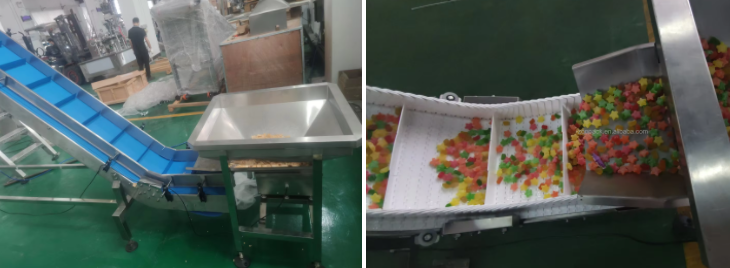
Small belt conveyor manufacturers
Small belt conveyor manufacturers often offer customized solutions tailored to specific application needs. This customization extends beyond simple sizing and encompasses every key component of the system. First, regarding conveyor belts, manufacturers offer a variety of materials, surface textures, and specialized structures based on material characteristics (such as abrasiveness, viscosity, and temperature) and conveying environments (such as inclination angle and the need for anti-slip measures). For example, to accommodate inclined conveying, belts with patterns or sidewalls can be used. Customization of the frame structure is another key aspect. Manufacturers can design conveyors of varying lengths, widths, and heights based on the customer's site space and process flow. Frame materials are also highly flexible, with carbon steel, stainless steel, and aluminum alloy being common options to accommodate varying load-bearing, corrosion resistance, and hygiene requirements. Frame adjustability (such as height and angle adjustment via hydraulics or screws) is also a key consideration during customization. Finally, the customization of movement and auxiliary functions expands the Small Belt Conveyor's application range. In addition to standard fixed and wheeled movement, manufacturers can also design crawler-type movement systems to accommodate complex or rugged terrain. Additional auxiliary devices such as hoppers and side guards can also be designed and installed based on customer needs. In summary, through in-depth customization of the conveyor belt, frame, drive system, and auxiliary functions, manufacturers can provide customers with small belt conveyor solutions that are perfectly aligned with their production processes.
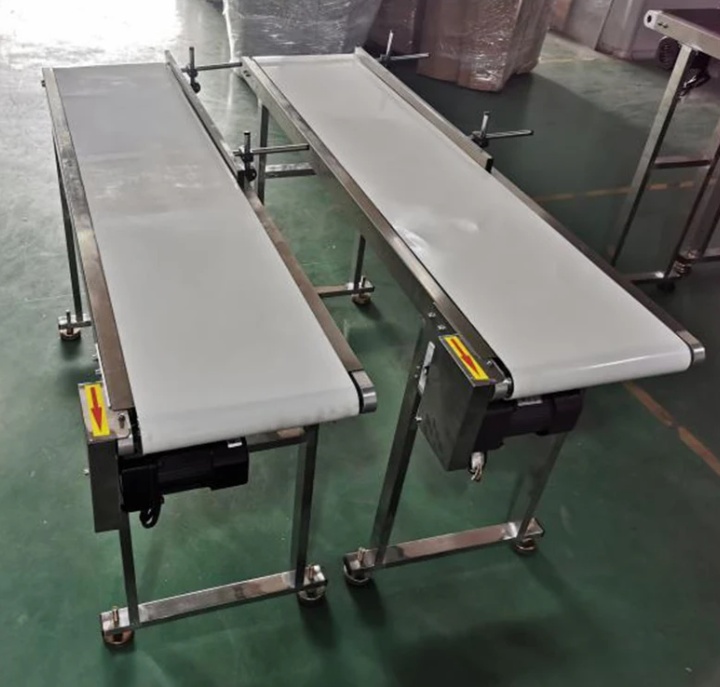
Small Belt Conveyor Case Studies
Small Belt Conveyors, due to their compact structure, flexible movement, and adaptability, are widely used in various industries. For example, in material handling and transportation, small belt conveyors play a key role in various production lines, transporting materials from one workstation to another or loading and unloading trucks, containers, and racks. Their adjustable tilt function makes them easily adaptable to various conveying heights. In the logistics, warehousing, and express delivery industries, small belt conveyors are commonly used for loading, unloading, and sorting parcels, cartons, and bagged items. They effectively improve work efficiency, especially in areas with limited space. Furthermore, small belt conveyors are easily integrated with other production equipment and can be used as part of a packaging line to transport products to be packaged or to transfer packaged products to the next stage. In industries such as food and electronics manufacturing, their customized designs meet stringent hygiene and precision requirements. In agriculture, small belt conveyors are used to transport agricultural products such as grain, feed, and fertilizer. On construction sites, they can be used to transport building materials such as sand, gravel, and cement, making them particularly suitable for working in complex terrain or confined spaces. The Small Belt Conveyor is also an ideal choice for recycling centers, where it can be used to transport recyclables such as waste paper, plastic bottles, and metal fragments for subsequent sorting and processing. In short, the Small Belt Conveyor has become an indispensable tool in industrial production due to its versatility and customizability.
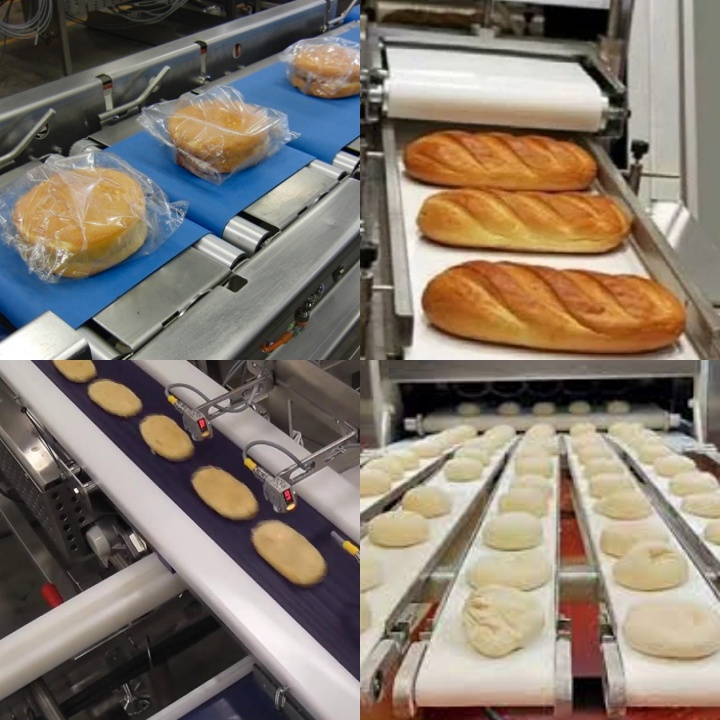
The design of Small Belt Conveyor focuses on providing a smooth and controllable way to move materials. Its structure is usually easy to operate and maintain daily, reducing the reliance on complex tools or procedures. In practical environments, these conveyors can be connected with existing equipment to achieve continuous supply or collection of materials. The operating characteristics of belt conveyors, such as the stability of their material load, make them adaptable to a variety of products and production processes.
